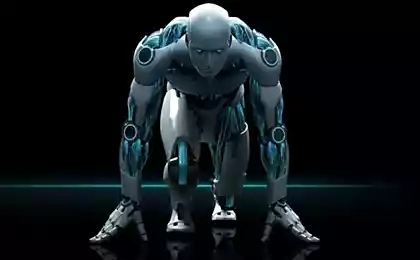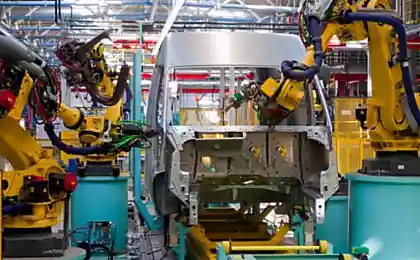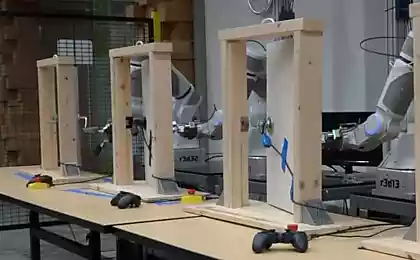631
Robotic animals of the world
Robotic creation, flooded the planet – that's a dystopian society, when a Hummingbird actually is a surveillance camera, and the huge robably marching across the rocky landscape. In General, many of the following robot animals were developed for military purposes, but a number of them do and quite peaceful, like the study of pollution under water or saving the lives of victims of the disaster.
Cheetah-record holder from the US Department of defense
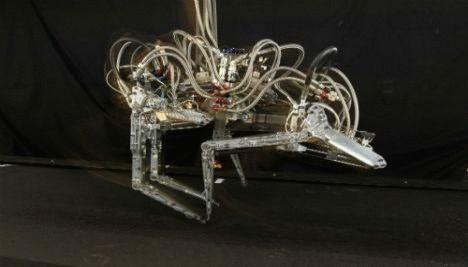
Management of perspective research of the Ministry of defense in recent years has presented many incredible robotic animals. Their robot Cheetah in September of that year broke his own record 29 km/h, developing a maximum speed of 45.3 km/h. the Project aims at improving the movements and capabilities of the robot that such mechanisms could be used for emergency response, humanitarian aid and other military missions.
"Design of a robot-type Cheetah is a serious and inspiring mission, but our goal is not just to imitate nature. In a robot Control specialists trying to understand and invest in the mechanisms of certain key abilities that living organisms have refined over thousands of years of evolution: efficient movement skills, manipulation of objects and adaptability to the external environment", — said the head of the programme Management Jill Pratt.
Cargo military mule from US Department of defense
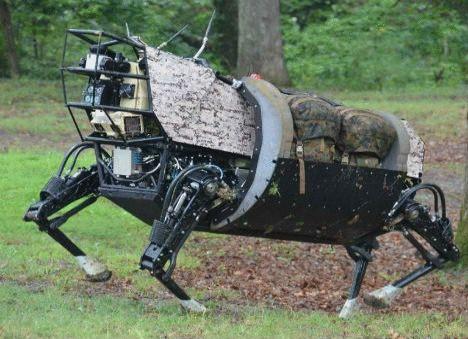
This robotic mule can literally be lifted from the shoulders of soldiers a lot of weight, but sometimes they are forced to carry up to 45 pounds of gear. Walking support system DARPA LS3 can carry up to 180 kg of cargo on difficult terrain, crossing streams and climbing hills. The mule is programmed to respond to voice commands and follows the leading. The robot can also be used as mobile charger for various electronics.
Self-governing fish, sensing pollution
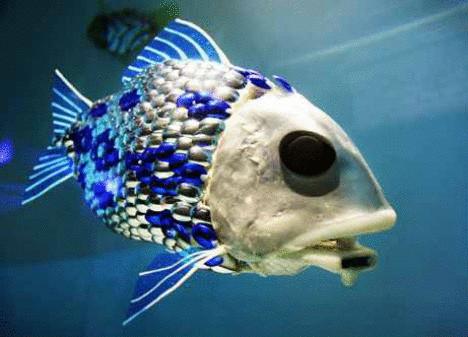
This robot, floating so gracefully, like a real fish, and are an established UK specialists in computer science. The device uses artificial intelligence and built-in sensors to avoid obstacles underwater and react to environmental changes. Project managers believe that this "fish" can be used to detect leaks in the pipeline and the seabed. At the moment the robot is equipped with a 5-hour battery, but ideally he will be able to swim to the charging stations, when energy reserves run out.
Ostrich FastRunner
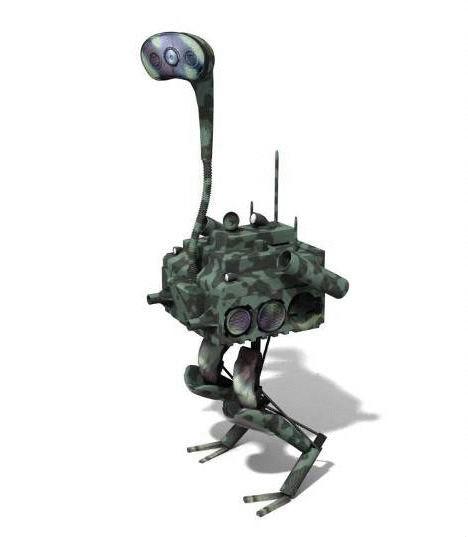
The FastRunner robot from US Department of defense created in the image and likeness of the fastest bipedal creature on earth, and he is able to run at a speed of 32 km/h on a level surface and 16 km/h on slightly rough terrain. With their built-in cameras, this robot could make movies about a dystopian future.
Gecko StickyBot
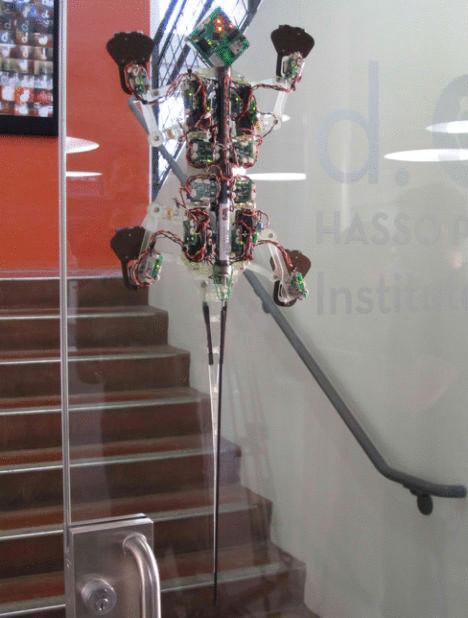
Tenacious paws of the Gecko inspired robot capable of similar way to climb the smooth surface. StickyBot is the result of five years of research, during which experts studied the ability of geckos to climb glass walls, and other surfaces with dry adhesion. The paws of an animal covered with hundreds of grooves, each of which selinitsa millions of individual hairs 10 times thinner than a human hair. They are so tiny that interact with the molecules of the surface over which the animal is raised. Researchers have invented a rubber material, covered with hundreds of tiny polymer hairs.
Robot BIGDOG
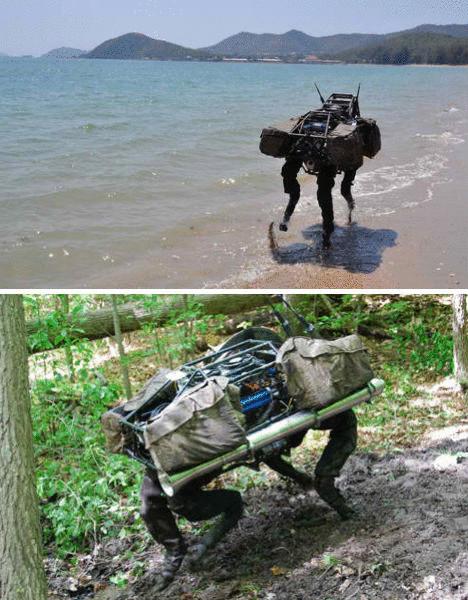
Robot BigDog company "Boston Dynamics" the size of a large dog. It is about a meter long, weighs 110 kg and is equipped with four legs, moving as the animal. The robot is able to maintain balance, to navigate in space and to configure the method of travel depending on conditions. He can move even in the snow or in the water, climbing on muddy trails and climb after the rollover.
Bird SmartBird

The inventors studied the flight of birds to make a lightweight and aerodynamic robot with increased mobility. On the creation of SmartBird was inspired by the herring gull, and the resulting robot can autonomously climb into the air, fly and land. In addition, the wings of the machine can not only move up and down, but to bend, providing a wider range of movements.
Hummingbirds from the US Department of defense
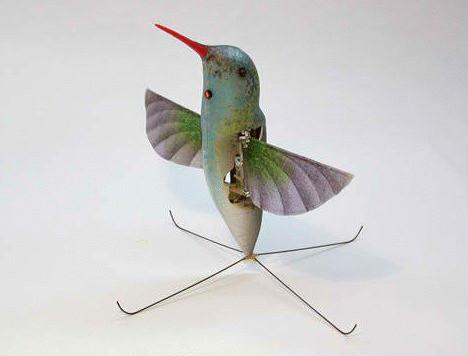
So this bird quickly flaps its wings and moves gracefully in the air that you would never suspect her soulless mechanism, until it stops. This Hummingbird weighs less than a AA battery and sends operator real-time video using a tiny built-in camera. The military are going to use this robot for discreet monitoring of possible threats, inside or outside the building from a safe distance.
Biomimetic underwater lobster

These robotic lobsters may crawl along the sea floor in search of mines and other dangers, or exploring the places unsafe for scuba divers.
Cockroach cyborg
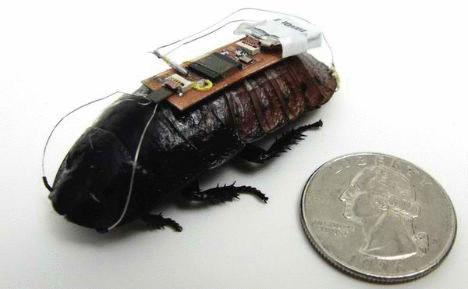
Can cockroaches-cyborgs to save a person's life? For all its primitiveness, they are able to survive in any conditions, and after transformation in controlled biological robots, they will help rescuers to locate victims of the disaster. Scientists give insects the anesthesia, and then injected around the electrodes antennae. Using medical epoxy fix on the backs of tiny magnets, which in turn establish the wireless control system. These devices are also equipped with signal beacon and a microphone to capture the cries of the injured.
Source: /users/104
Cheetah-record holder from the US Department of defense

Management of perspective research of the Ministry of defense in recent years has presented many incredible robotic animals. Their robot Cheetah in September of that year broke his own record 29 km/h, developing a maximum speed of 45.3 km/h. the Project aims at improving the movements and capabilities of the robot that such mechanisms could be used for emergency response, humanitarian aid and other military missions.
"Design of a robot-type Cheetah is a serious and inspiring mission, but our goal is not just to imitate nature. In a robot Control specialists trying to understand and invest in the mechanisms of certain key abilities that living organisms have refined over thousands of years of evolution: efficient movement skills, manipulation of objects and adaptability to the external environment", — said the head of the programme Management Jill Pratt.
Cargo military mule from US Department of defense

This robotic mule can literally be lifted from the shoulders of soldiers a lot of weight, but sometimes they are forced to carry up to 45 pounds of gear. Walking support system DARPA LS3 can carry up to 180 kg of cargo on difficult terrain, crossing streams and climbing hills. The mule is programmed to respond to voice commands and follows the leading. The robot can also be used as mobile charger for various electronics.
Self-governing fish, sensing pollution

This robot, floating so gracefully, like a real fish, and are an established UK specialists in computer science. The device uses artificial intelligence and built-in sensors to avoid obstacles underwater and react to environmental changes. Project managers believe that this "fish" can be used to detect leaks in the pipeline and the seabed. At the moment the robot is equipped with a 5-hour battery, but ideally he will be able to swim to the charging stations, when energy reserves run out.
Ostrich FastRunner

The FastRunner robot from US Department of defense created in the image and likeness of the fastest bipedal creature on earth, and he is able to run at a speed of 32 km/h on a level surface and 16 km/h on slightly rough terrain. With their built-in cameras, this robot could make movies about a dystopian future.
Gecko StickyBot

Tenacious paws of the Gecko inspired robot capable of similar way to climb the smooth surface. StickyBot is the result of five years of research, during which experts studied the ability of geckos to climb glass walls, and other surfaces with dry adhesion. The paws of an animal covered with hundreds of grooves, each of which selinitsa millions of individual hairs 10 times thinner than a human hair. They are so tiny that interact with the molecules of the surface over which the animal is raised. Researchers have invented a rubber material, covered with hundreds of tiny polymer hairs.
Robot BIGDOG

Robot BigDog company "Boston Dynamics" the size of a large dog. It is about a meter long, weighs 110 kg and is equipped with four legs, moving as the animal. The robot is able to maintain balance, to navigate in space and to configure the method of travel depending on conditions. He can move even in the snow or in the water, climbing on muddy trails and climb after the rollover.
Bird SmartBird

The inventors studied the flight of birds to make a lightweight and aerodynamic robot with increased mobility. On the creation of SmartBird was inspired by the herring gull, and the resulting robot can autonomously climb into the air, fly and land. In addition, the wings of the machine can not only move up and down, but to bend, providing a wider range of movements.
Hummingbirds from the US Department of defense

So this bird quickly flaps its wings and moves gracefully in the air that you would never suspect her soulless mechanism, until it stops. This Hummingbird weighs less than a AA battery and sends operator real-time video using a tiny built-in camera. The military are going to use this robot for discreet monitoring of possible threats, inside or outside the building from a safe distance.
Biomimetic underwater lobster

These robotic lobsters may crawl along the sea floor in search of mines and other dangers, or exploring the places unsafe for scuba divers.
Cockroach cyborg

Can cockroaches-cyborgs to save a person's life? For all its primitiveness, they are able to survive in any conditions, and after transformation in controlled biological robots, they will help rescuers to locate victims of the disaster. Scientists give insects the anesthesia, and then injected around the electrodes antennae. Using medical epoxy fix on the backs of tiny magnets, which in turn establish the wireless control system. These devices are also equipped with signal beacon and a microphone to capture the cries of the injured.
Source: /users/104










